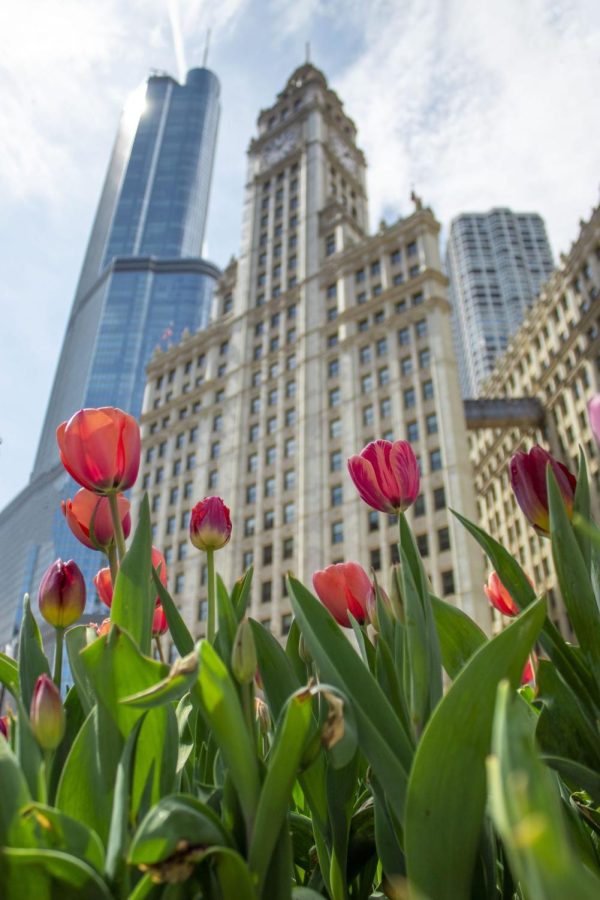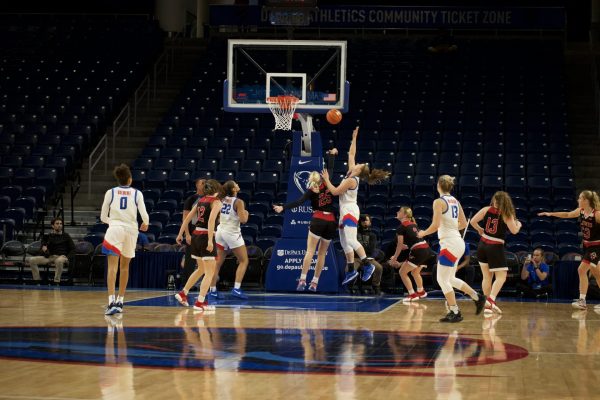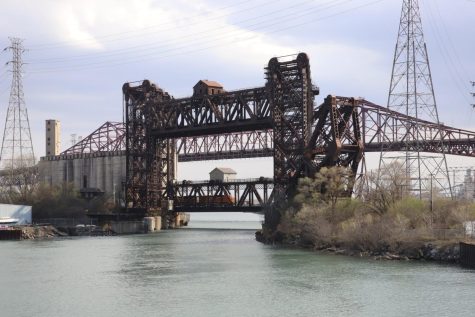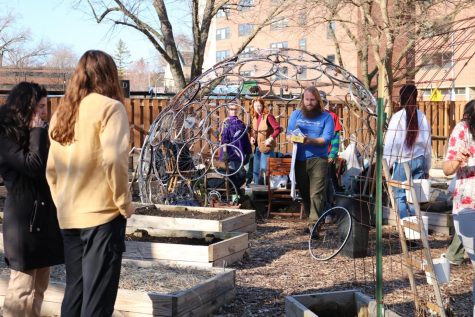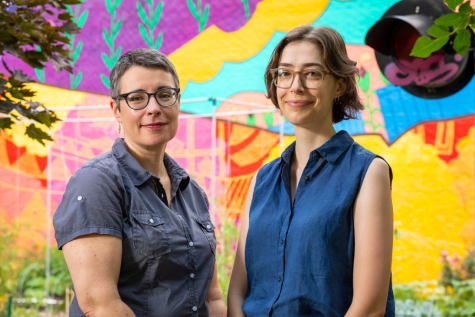Falling flat: Over a decade of city plans, little to no action seen
The traditional tulip bulbs planted each year began to bloom this past weekend.
Fifteen years have passed since Chicago created the first Climate Action Plan (CAP) in 2008, and it has been a year since the release of the updated 2022 CAP.
The original 2008 plan created a goal to cut carbon emissions by 25% by 2020 from 1990 levels. According to 2019 data from Chicago Metropolitan Agency for Planning, the city missed that goal.
“It’s concerning, because good intentions are great but we’re at the point where we need to make progress,” said DePaul environmental scientist Mark Potosnak.
There were 35 ways laid out in the 2008 CAP that needed to be taken in order to mitigate climate change in Chicago, involving buildings and construction, renewable energy, transportation, reduced waste and industrial pollution and adaptation.
To make buildings more energy efficient, the plan gave specifics about what needed to happen. According to the plan, appliances needed to be traded in for more energy efficient options, water needed to be conserved, the city energy code needed to be updated, and more trees and green spaces needed to be planted.
According to Citizens Utility Board Carbon Free Buildings Coordinator David Weaver, much more needs to be done in this area.
“We need to implement no new construction with fossil fuels combustion rules. So you can’t develop a new housing residence that has gas stoves or furnaces,” Weaver said. “Instead it should be designed from the get-go and implemented with all electric [facilities]. That way we move away from fossil fuels and the extremely volatile natural gas industry. Every building we build today that burns fossil fuels, there’s a good chance they’ll be burning them 50 years from now.”
Increasing tree coverage is another aspect of the 2008 CAP, however how much shade you have often depends on where you live. Communities of color and lower-income communities have less tree coverage than communities that are majority white and affluent, according to ABC-7 news.
According to data from the Chicago Region Tree Census at the Morton Arboretum, from 2010 to 2020, tree coverage decreased in the city of Chicago, despite increasing tree coverage being a goal of the CAP.
Much of this is attributed to ash tree loss from infestation of the Emerald Ash Borer. This insect infests ash trees, requiring these trees to be cut down to eliminate the insect from spreading.
The updated 2022 CAP is much more focused on environmental justice and remedying the harm that has come from climate inequities. Often, the experiences of climate change depend on race and socioeconomic status.
One example is urban flooding.
“There’s other areas within the city of Chicago that experience flooding to a greater degree than Little Village, but like most communities that are near industrial corridors, they face their fair share of urban flooding due to the land use,” said senior policy analyst for water rights at Little Village Environmental Justice Organization (LVEJO) Brenda Santoyo.
According to a map from the city of Chicago, most industrial corridors are located on the West and South Side, leaving these communities, many of which are majority people of color, susceptible to flooding.
“Overall, the trees and shrubs have either not been replaced or if replaced they have not grown sufficiently to create a mature canopy,” the Chicago Region Tree Census said in a statement.
While Chicago needs more renewable energy, simply shifting is not enough, according to Potosnak.
“Where we consume the most energy in Chicago is via electricity. Electricity gets sent into the city, so we’re responsible for all those emissions. We don’t produce much electricity in the city anymore. The city could go to more of these renewable sources, but it doesn’t really change your energy [usage],” Potosnak said.
Not only does production of energy need to convert from fossil fuels to renewable energy sources, but all Chicagoans need to find ways of cutting down energy use.
They’re producing it somewhere else; you’re getting the credit for using it, but you’re still using the same amount of electricity. So if we look at the Climate Action Plan, things we could work on are the adaptation piece, so green roofs and trees and trying to make the heat index not so bad, but we also need to mitigate climate change and not emit as much,” Potosnak said.
Organizations such as Citizens Utility Board (CUB)say that renewable energy not only benefits the Earth, but benefits your budget as well.
“Clean energy is affordable energy. In this situation, the things that are best for the planet are also the best for our pocketbooks,” Weaver said. “I think most of the time those align perfectly, but not always. Especially for early adapters, [such as] electric vehicles can be in the tens of thousands of dollars, and are not affordable. [However] when it comes to clean energy, that is affordable, and when it comes to good building performance standards that saves all of us money in the long term.”
If Chicago fails to act, the consequences could be dire. In the original plan, scientists predicted that in a higher-emissions scenario the number of days in the next few decades in which Chicago would be over 100 degrees Fahrenheit was five. However, if emissions still are high and do not decrease significantly, by 2070, Chicago will have 31 days of 100-degree weather.


